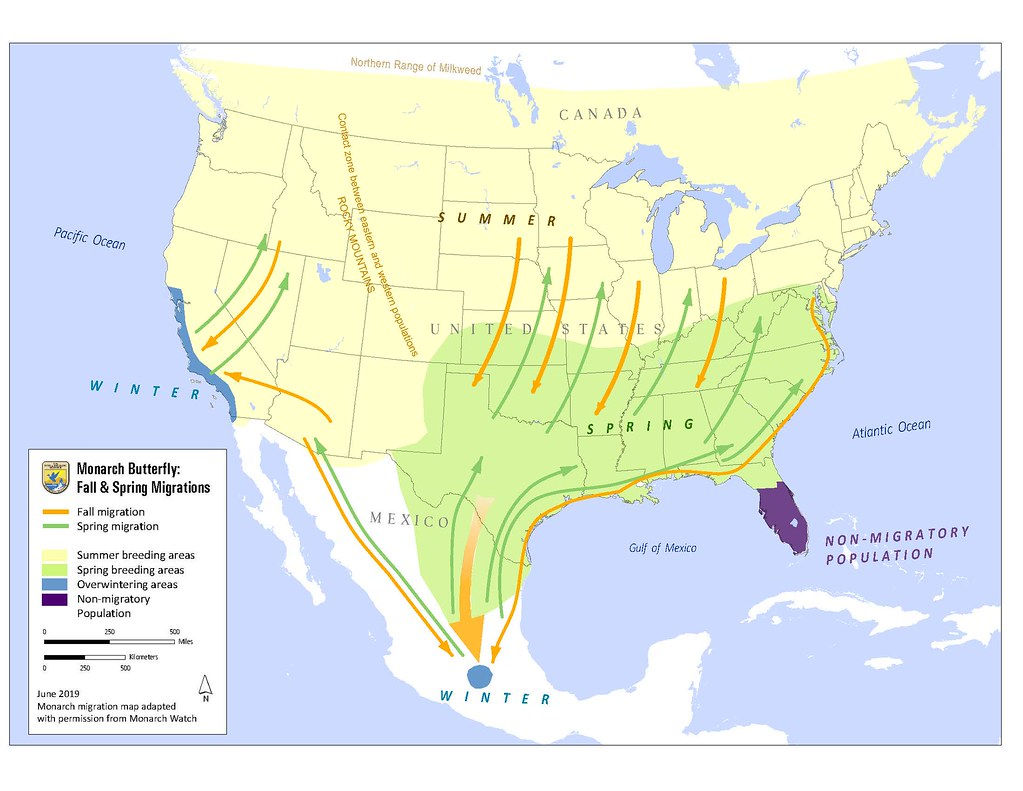Monarch Butterflies migrate thousands of miles each fall -- from areas in the United States and Canada to central Mexico -- and then back again in the spring.
Along the way, they stop for nourishment and shelter, and to lay their eggs.
Monarchs need new breeding grounds to replace the millions of acres lost to development and herbicide applications. They also need sun; your garden should be planted in an area that gets at least 6 hours of direct sunlight.
To encourage Monarch waystations, Monarch Watch is offering Official Monarch Habitat Certification to homeowners who meet the guidelines required to sustain the Monarchs.
These guidelines include a garden of at least 100 square feet in a mostly sunny spot. The garden should have at least 10 milkweed plants -- the flowers Monarch butterflies use, exclusively, to lay their eggs.
Milkweeds that grow naturally here include swamp milkweed and butterfly milkweed, both of which are included in this kit.
The plants should be spaced 12 to 18 inches apart to give the Monarchs cover but not crowd them.
In addition, Monarchs need perennials that provide nectar, such as Joe Pye Weed, bee balms or asters. You'll need at least 10 of these as well.
This kit is available for pre-order now and make a great holiday gift. We expect the kits to be ready for pick up around May 1, 2026 at Tree Talk Natives.
Once you’ve built your Monarch Waystation, be sure to go to Monarchwatch.org and have it registered!
Monarch Butterfly Garden--Kit
Our Monarch Waystation kit includes:
50 plants, all plugs and presented in a tray measuring roughly 11 x 22 inches. These plants are intended for a garden of approximately 100 square feet.
All of the plants in this kit have high or very high pollinator values, and they complement each other nicely in a mostly sunny spot with average soil.
Best to plant the milkweeds around the perimeter! Monarchs are prey animals and appreciate visibility.
Bloom colors and times are indicated in parentheses
- 10 Butterfly Milkweed -- these prefer drier soil. (Orange, June-August)
- 5 Swamp Milkweed (Rose, June-August)
- 5 Smooth Aster (Purple and yellow, September-October)
- 5 Anise Hyssop (Purple, June-September)
- 5 Golden Alexanders (Yellow, May-June)
- 5 Plantain-leaf Pussytoes (White, March-May)
- 5 Purple Coneflower (Purple, July-September)
- 5 Sweet Joe Pye Weed (Pink and lavender, July-September)
- 5 Black-eyed Susans (Yellow, July-October)

